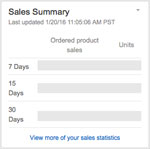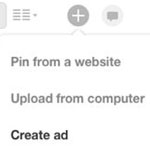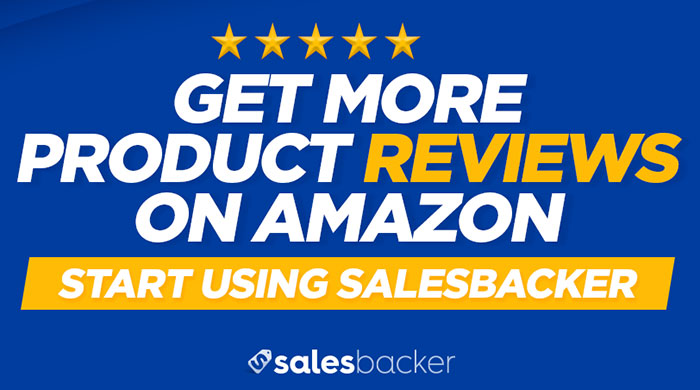The savvy Amazon seller is always interested in optimizing their listing. There’s always the hope that one more tweak will be the key to an increase in sales volume.
So we cycle through the checklist of typical optimization. Could we upgrade our listing with:
- Better quality images?
- Keyword rich title?
- Improved sales copy inside my bullets?
- More customer reviews?
- A pricing sweet spot?
Now these are all legitimate ways to improve your listing. We’ve written about them. In fact, lots of people have written about them.
And this is generally standard wisdom for the Amazon seller.
The only problem? It takes time to test.
For example, you can decide to use more keywords in your title, but how long do you test those out? Two weeks? Three weeks? And what if you have the right keywords, but they’re just in the wrong order?
Or if you wanted to improve your bullet points, how long would it take you to finalize those changes? How many various combinations are there within your listing?
In other words, how confident are you that your changes are actual improvements?
I think you’d agree, it’d be great if you could see actual proof that your improvements are working.
Is that possible?
I think so.
Confidence from Your Competition?
Now you might find an article out there showing you how to make those tweaks on your listing, and they might even offer some kind of social proof from their own account.
But more than likely, they weren’t selling your product or even in your niche.
So what if you could find someone who not only has an optimized listing and a great BSR (Best Seller Ranking) than you, but they’re actually in the same niche as you?
They do exist. They’re called “your competition”.
That’s right. Though most sellers will examine their competition when first setting up their listing, very few think about their competition as a continual source of information for their own listing.
Here’s why you should study your competition regularly:
- They’re already killing it in your niche.
- They’re obviously doing something right.
- Their listing is available to anyone who wants to study it.
- You know what to look for in a good listing. (and I’ll be giving you tips in this article)
Now when I say study your competition, I don’t mean “black hat”, shady kind of spy techniques.
I don’t mean sabotaging or hijacking or even stealing their sales copy.
I’m simply suggesting that you do what business owners have done for thousands of years…
Study the competition.
Learn from the experts.
And who is an expert on selling your product on Amazon? Your competition.
The purpose isn’t to destroy their business.
The main purpose is to simply help your own product move up in the rankings.
It’s not about annihilating your competitor’s business. It’s about advancing your own.
A quick warning
When we talk about spying on your competition, you need to make sure you choose the right competing brand to study. So before you jump into the steps I give, be sure you keep these caveats in mind:
- It’s possible that the brand in the #1 spot for your product niche is a large, nation-wide brand. If this is the case, you may want to move on. Nationally known competitors will be able to often “break the rules” of listing optimization and simply sell well on their brand recognition. You don’t have that ability yet.
- It’s also possible that the brand in the #1 spot for your product is a newcomer to the Amazon world who is simply using some temporary tactic to get to page one. If you see a brand with only a handful of reviews (most of which are from giveaways) and a BSR worse than yours sitting in the top position, it’s probably a temporary PPC push or some other quick method of capturing a top spot for a while. Move on to another competitor. (You can use camelcamelcamel.com to check the BSR history if you’re not sure.)
- More than likely, you already know which competitor you should study, but if not, look for someone who is (1) significantly higher in BSR than you, (2) not a nationally known brand, (3) not a brand with a huge line of multiple products on Amazon. Though any competitor can teach you something, we’re looking for a competitor who is doing better than you but is close to the same level as you.
Spy School 101
So let’s start the process of spying on your competition. Remember, when I say spying, all I really mean is studying your competitor and asking the question, “What are they doing well that I might also be able to implement?”
Here are the places I would initially investigate:
1. My competitor has ____________ reviews.
I know you probably looked at this when you first determined the niche you were going to enter, but you need to see where your competitor is currently. More than likely, their reviews have grown since then.
Applying to your own listing:
You don’t have to “out review” all of your competitors, but they may provide a good benchmark for your to consider.
If your competitor has 800+ reviews, and you’re sitting at 55, you’ll need to increase your reviews. So why not aim for the same number that your competitor currently has?
Implement another giveaway, use an automated email follow-up sequence to ask for product reviews, and start setting goals for how many reviews you’d like to have in three months.
2. My competitor’s weaknesses are ___________________________________________.
Since you’re already looking at the reviews of your competition, it’s time to start reading through them. We’ll start with the negative reviews. Remember, you can sort reviews to see only the negative ones by using the sort feature on the review page.

Once you’ve sorted the reviews for all critical ones, examine the customer complaints to see if there are any specific weaknesses in their product or brand in general. Don’t include petty issues that are highlighted by whiny people. Look for honest feedback from customers who weren’t happy with their purchase.
Applying to your own listing:
The weakness of your competitors may be a great way to highlight the strengths of your own. So for instance, here’s a negative review on a probiotic supplement for humans:

The customer complains that the product only has 7 strains of bacteria instead of the 14 it advertised. If this was a consistent theme of reviewers and my product contained 20 strains of bacteria, I’d start really promoting the number of strains in my product title and/or bullet points.
If customers are finding a product unsatisfying and you can solve that problem, start advertising your solution.
3. My competitors strengths/differentiations are _________________________________.
Now it’s time to sort the reviews by all positive and begin combing the reviews to find out what customers love about the product. You should also read over their listing to find what distinct features their product has over other products (they should be highlighting these in their listing).
Applying to your own listing:
Why should you care about the strengths and differentiations of your competitor’s product?
Well, sometimes you might be able to tweak your own product to match or exceed your competitors? For example, maybe one of your competition’s greatest features is “Made in the USA”. Why not contact your supplier and find out if you could source your ingredients or parts directly from the U.S.? Or call several US suppliers and ask for quotes? It may cost a few extra cents per unit, but what if it could increase your sales dramatically.
Or going back to the probiotic product above, what if you could add another strain of bacteria to your own probiotic? Again, a few cents extra in supply costs might reap dollars in profit.
Simple tweaks that make your product more competitive are sometimes possible. Investigate the possibility for your own product.
4. My competitors keywords are probably ______________________________________.
Sure, you can do your own keyword research. You should.
But if you’ve found the right competitor in your niche, you’ve also found someone who has done serious keyword research as well.
Oh, and their research seems to be working.
So look over your competitors title and look for the keywords they may be targeting.
For example, if I were competing against other probiotic brands, I’d look at this title:

And what would you suppose the keywords might be in this title? I don’t know for sure, but these are some good possibilities:
- Best probiotic supplement
- Time Release
- Pearls
- Once Daily
- More Effective
- Easy to Swallow
- Digestive Health
Not only are these great keywords, but this title also reveals some of their distinctives as well.
Now, look over your competitor’s feature bullets to search for possible keywords. Here’s the same seller’s features/benefits:

So another gold mine for keywords, right? Here are a few of the big ones I see:
- Intestinal tract
- Large intestine
- Immune system
- Beneficial bacteria
- Digestive and immune health
- Yeast growth
- Gas bloating irregularity
- Etc.
There are more possibilities within the bullets, but I think you get the idea.
Applying it to your own listing:
So I would take these keywords from the title and bullets and immediately check to see if they’re in my own listing. Now that doesn’t mean I have to include them in the title. I might decide to pad my bullet features with them or simply insert them into the back end of my Seller Central listing.
Of course, just because you insert the keywords into your listing doesn’t mean you’ll immediately take over the #1 spot. But it’s very possible that other competitors near you aren’t doing this kind of research. And you can move past those guys with more keywords.
Do added keywords help or hurt your chances to improve your Amazon sales rank?
You’re welcome.
Future Products
If you’re just starting out on Amazon, you should keep an eye on the future of your business. What’s your long term plan for your brand? What’s your product line look like five years from now?
One way to gain ideas on your second or third product is to examine your competitors product line. If they’re doing well, their other products may be feeding that success.
And many times, your competitor has simply been in the Amazon market longer than you have. They may have already done the tests on future products, and at the very least, their other products will tell you if there’s potential in them.
So why not use their experience for your own benefit. You might be able to avoid poor performing products that way.
You can always see a company’s product line by clicking on the blue link of their name below or next to their title.

When I click on the probiotic brand we looked at earlier, Hyperbiotics, I get a great idea for future products that I might not have considered before, including this one:

Applying it to your own listing:
So what does it take to make a children’s version of a probiotic? I don’t know for certain because I’m not in this niche, but my guess is “not much”. Maybe less ingredients for smaller tummies? And that seems to be an easy call to my supplier to see what that would cost.
In other words, I’m simply looking for an easy transition to my next product, and I found a possible solution right within my competition’s own listings.
Sure, you may not want to follow their exact product line, but remember, big name sellers are there for a reason - they know what they’re doing.
And it doesn’t hurt to apply a little of their wisdom to your own business model.
The old saying still holds true: imitation is the highest form of flattery.
Conclusion
Studying your competition is such an effective way of optimizing your listing because it’s immediately relative.
They’re in your niche.
They’re selling a product similar to yours.
They’re using Amazon as a sales platform.
For these reasons, it only makes sense that we should spend more time studying high performing competitors in order to learn the strategies that could help us as well. It doesn’t take a high degree of knowledge to do so, and nearly all of your research can be done directly on Amazon.
And you just never know what a competitor’s listing might reveal to you. Could it be that the secret to your future growth is hiding closer than you realized?
It’s time to find out.







